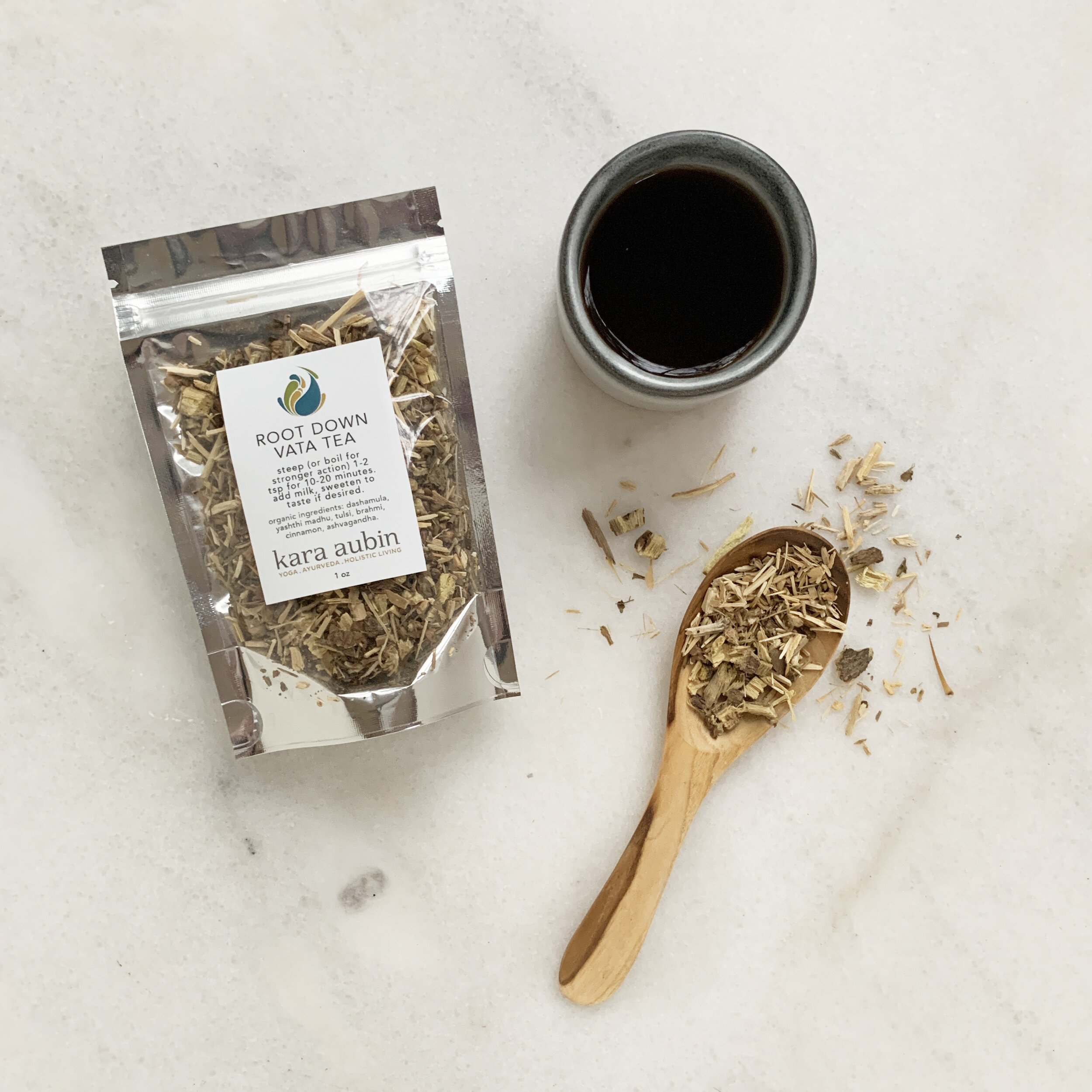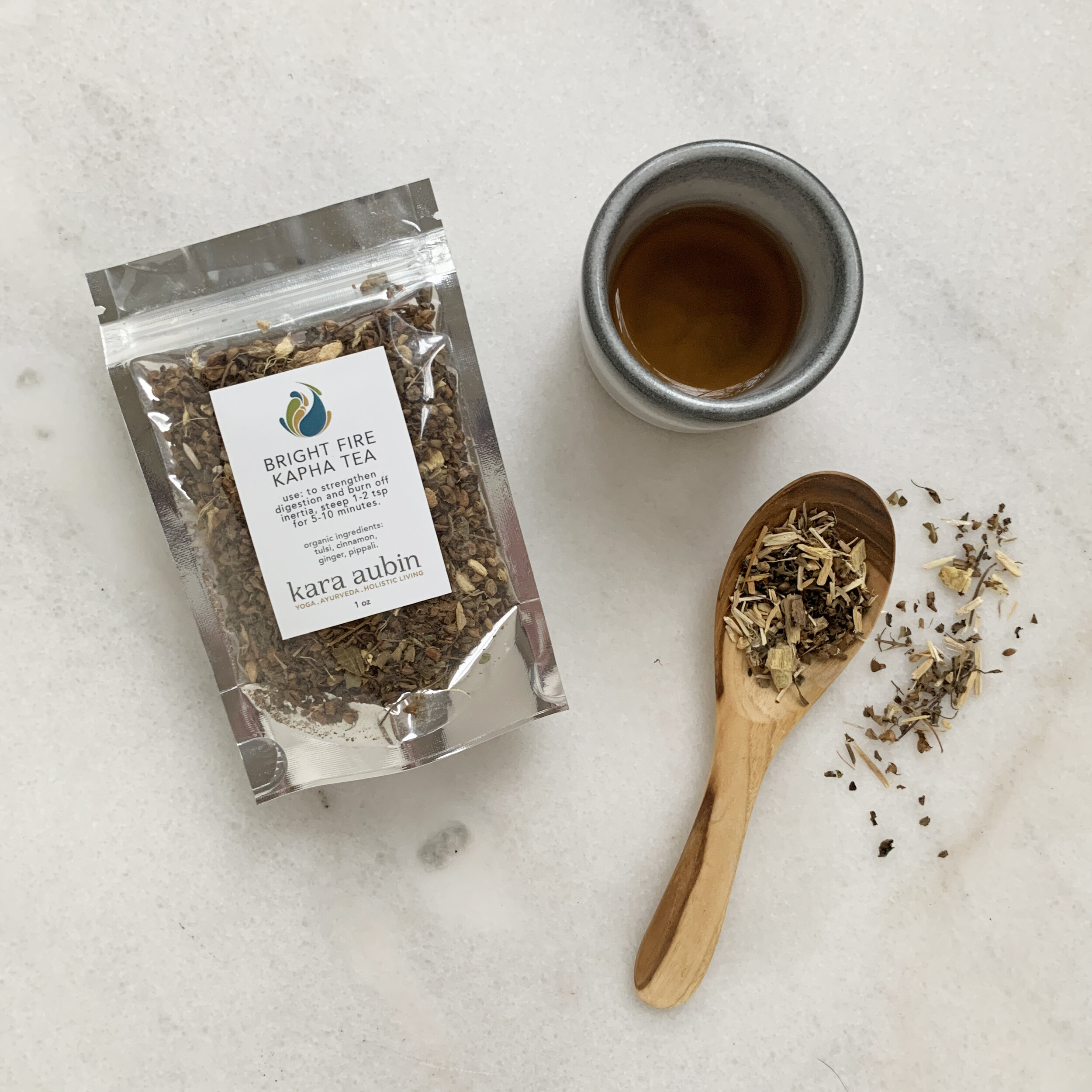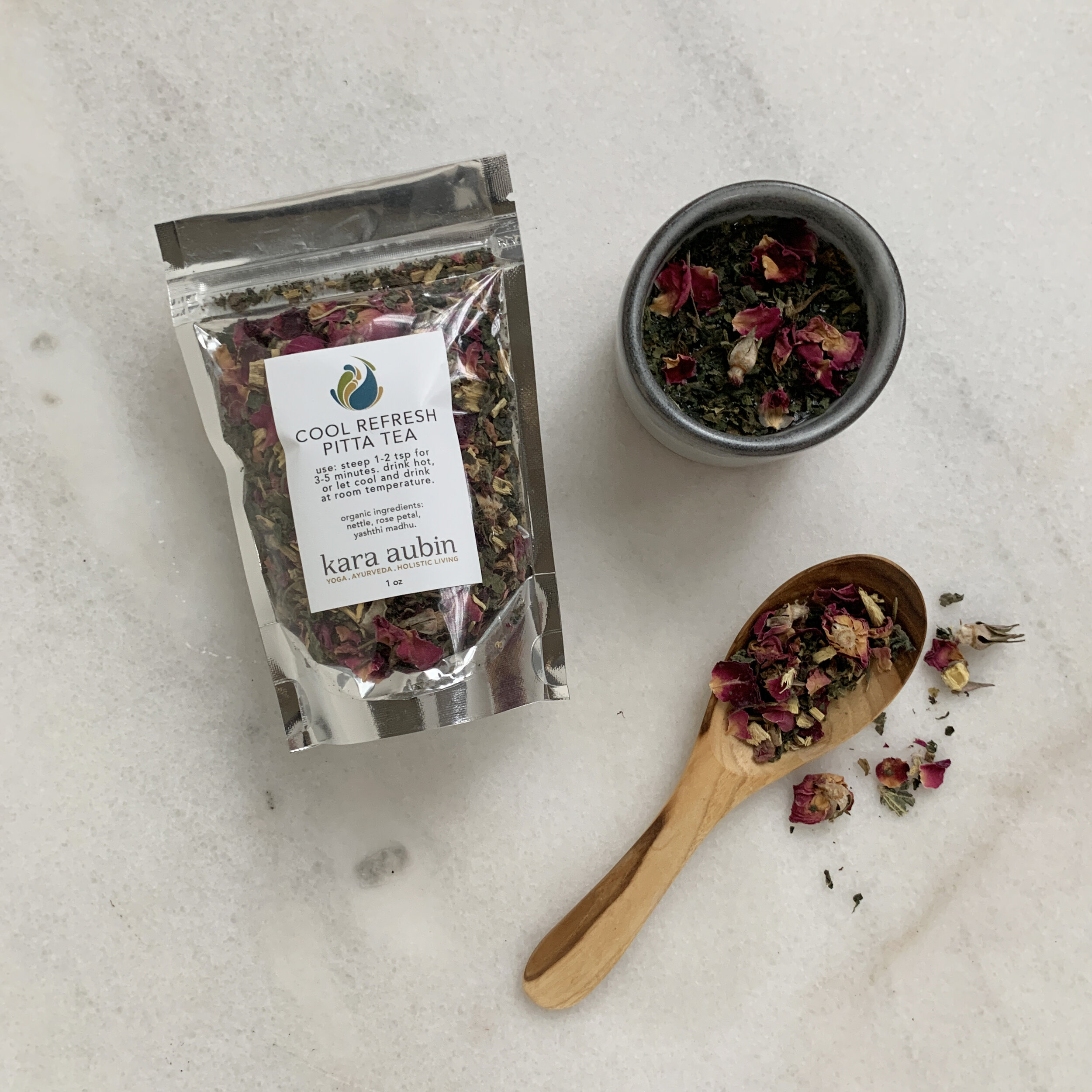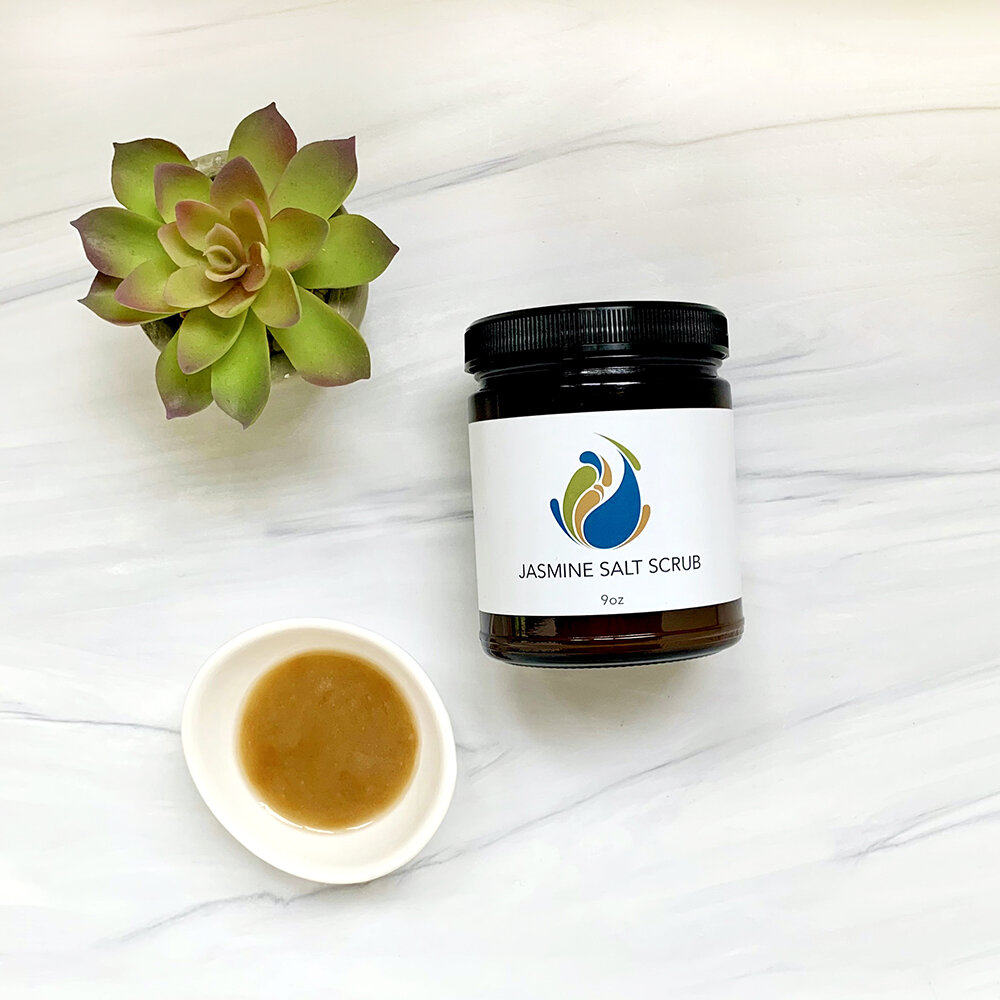Doshic Imbalances + the Menstrual Cycle
Menstruation as a Report Card
In the female body, the menstrual cycle is just one of the markers we can use to “look under the hood” at our doshic balance. I like to think of menses as a kind of monthly report card on nutrition, hydration, stress, and dosha.
Symptoms are how our body communicates to us. And a healthy menstrual cycle is one that is fairly symptomless and unremarkable. So we can look to our symptoms to tell us what dosha(s) are out of balance by looking at the symptoms preceding and during our bleeding phase.
Vata Imbalances
Vata is comprised of air and ether elements, and is described by the qualities of dry, light, rough, cold, mobile, subtle, and clear. Imbalances will be marked by these same qualities, or gunas.
PMS:
A Vata-imbalanced premenstrual cycle may look like the following.
anxiety, fear, insecurity, insomnia, fatigue
low back pain, cramping, constipation, clumsy
crave: Salty, Sweet, Crunchy
symptoms are worse pre-dawn/pre-dusk
Bleeding Phase:
irregular/scanty bleeding
amenorrhea
brownish-red, dry menstrual fluid
stringy, hard clots
PMS discomfort at beginning of cycle
lower back and abdominal pain.
constipation prior to menstruation and/or first 1-2 bleeding days
insomnia, dizziness, nervous tension, vertigo
forgetfulness, anxiety, fearfulness
craving for salty, sweet, crunchy
Pitta Imbalances
Pitta is comprised of fire and water elements, and is described by the qualities of hot, sharp/quick, oily, light, intense, spreading, and sour. Imbalances will be marked by these same qualities, or gunas.
PMS:
A Pitta-imbalanced premenstrual cycle may look like the following.
irritability, anger, critical, judgemental, outbursts
Hot Flashes, Acne, Diarrhea, Headache/Migraine
Craving for Spicy, Fried Foods, Caffeine, Alcohol
Symptoms worse at midnight/noon
Bleeding Phase:
menorrhagia / heavy bleeding
long duration
bright red color
fetid smell, sweating
burning sensation in bladder
fever, migraine, rashes
loose stools, diarrhea
irritability, anger, fatigue
increased appetite, sense of hypoglycemia
craving for sweets, spicy
Kapha Imbalances
Kapha is comprised of water and earth elements, and is described by the qualities of heavy, slow/dull, cold, oily, slimy, dense, stable, and sticky. Imbalances will be marked by these same qualities, or gunas.
PMS:
A Kapha-imbalanced premenstrual cycle may look like the following.
Sadness, Depression, Weepy, Sentimental
Bloat, Heaviness, Slow Elimination
Craving for sweet, heavy, cold, salt.
Symptoms worse during early-AM/PM
Bleeding Phase:
Clots/Mucus, Stagnation
Flow is thick with mucus or clots
Deep, dull aching in back of belly
Pain at end of cycle
Discharge before/after cycle
Bloating, cramping, water retention
Nausea, tender, swollen breasts
Weepy, sentimental, depression, clingy
Craving sweets, carbs, dairy
Lethargic, drowsiness, day-sleeping
how to work with these imbalances
While the symptoms tell us about the doshic origin or the imbalance, they also point us towards the practices and tools that will create balance in the system. Here are tools I commonly use with clients who have doshic menstrual cycle imbalances.
Tools for Vata:
These tools will generally offer the opposite qualities of those Vata gunas listed above.
You’ll want to focus on foods/herbs/ and therapies that are: unctuous, sweet, salty, sour, and warm in temperature.
Adequate Liquid + Lipid Hydration: ~60 ounces of mineral water taken warm/hot and regular ghee and sesame oil in food.
Vata Root Down Tea: a daily cup of this grounding, Vata-pacifying loose leaf tea can be supportive.
8 Spice Digestive: this Vata specific formula counters Vata-style indigestion, like gas, and bloat, while strengthen Vata’s irregular digestive fire.
Abhyanga: doshic oil massage is one of the most powerful tools for pacifying Vata. Do this daily on non-bleeding weeks.
Cramp Bark Tincture: used in western and indigenous herbalism to relax and release muscular tension, especially of the female reproductive system.
Mag Phos Cell Salts: a cell salt used for menstrual cramps, general muscle cramps, and radiating pain.
Tools for Pitta:
These tools will generally offer the opposite qualities of those Pitta gunas listed above.
You’ll want to focus on foods/herbs/ and therapies that are: sweet, cold, astringent, bitter
Pitta Cool Refresh Tea: a daily cup of this cooling, soft Pitta-pacifying loose leaf tea can be supportive.
Digest Cool: supports sour, acidic type digestion.
Jasmine Body Scrub: helps to move stagnation, and clear trapped, irritated Pitta.
Aromatherapy: Khus, Sandalwood, Jasmine, and Rose.
Tools for Kapha:
These tools will generally offer the opposite qualities of those Kapha gunas listed above.
You’ll want to focus on foods/herbs/ and therapies that are: pungent, astringent, bitter, dry, and hot in temperature.
Kapha Bright Fire Tea: a daily cup of this warming, stimulating, digestive Kapha-pacifying loose leaf tea can be supportive.
Three Pungents Spice: take 1/4 tsp in warm water before meals to stimulate sluggish digestion.
Kapha Body Scrub: helps to move lymph and stagnation, stimulating to circulation.
Castor Oil Pack: move stagnation in the reproductive system. Ask your practitioner about the frequency and duration that is right for you.
As always consult your health care provider for suggestions on which practices are appropriate for your particular circumstance and condition.
related products
The products and claims made about specific products on or through this site have not been evaluated by the United States Food and Drug Administration and are not approved to diagnose, treat, cure or prevent disease.
This site is not intended to provide diagnosis, treatment or medical advice. Products, services, information and other content provided on this site, including information that may be provided on this site directly or by linking to third-party websites are provided for informational purposes only. Please consult with a physician or other healthcare professional regarding any medical or health related diagnosis or treatment options.
related posts
loved what you learned? feeling inspired? share this article with someone who would benefit!
you can also share via the social icons below.
























